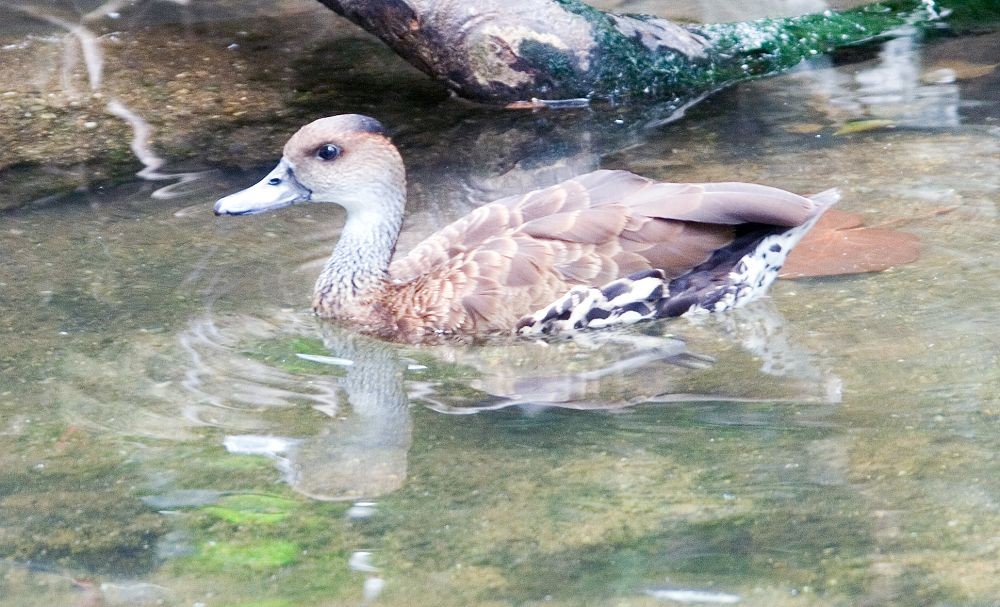West Indian Whistling-duck
A species of Whistling-ducks Scientific name : Dendrocygna arborea Genus : Whistling-ducks
West Indian Whistling-duck, A species of Whistling-ducks
Botanical name: Dendrocygna arborea
Genus: Whistling-ducks
Content
Description General Info
 Photo By Photo by David J. Stang , used under CC-BY-SA-4.0 /Cropped and compressed from original
Photo By Photo by David J. Stang , used under CC-BY-SA-4.0 /Cropped and compressed from original Description
The West Indian whistling duck is the largest (48–56 cm) and darkest of its genus. It has a long black bill, long head and longish legs. It has a pale foreneck and light brown face. The crown, back, breast and wings are dark brown to black, and the rest of the underparts are white with heavy black markings. All plumages are similar, except that juveniles are duller and have a less contrasted belly pattern. 
Size
58 cm
Nest Placement
Tree
Feeding Habits
West Indian Whistling-duck, a nocturnal feeder, primarily sustains on fruit, berries, seeds, and grain. Occasionally, it supplements its diet with small quantities of animal food, exhibiting a flexibility in its feeding habits.
Habitat
The west Indian Whistling-duck predominantly inhabits swamps and marshlands that feature dense arboreal vegetation, with a particular fondness for mangrove forests. Its preferred ecosystems also extend to shallow bodies of water, whether fresh, brackish, or saline, including man-made environments such as dams and rice paddies. Especially prevalent in regions rich with mangroves like Rhizophora mangle or buttonwood mangroves like Conocarpus erectus, they are a species associated with wetland habitats in broader tropical and subtropical zones.
Dite type
Herbivorous
General Info
Feeding Habits
Bird food type
Behavior
The birds are mostly nocturnal and secretive, inhabiting wooded swamps and mangroves, where this duck roosts and feeds on plant food including the fruit of the royal palm. 
Distribution Area
The West Indian whistling duck is widely scattered throughout the West Indies, including a large breeding population in the Bahamas, and smaller numbers in Cuba, the Cayman Islands, Antigua and Barbuda, Jamaica, Hispaniola (Dominican Republic and Haiti), and Puerto Rico. It is largely sedentary, apart from local movements, which can be 100 km or more. 
Species Status
CITES Appendix II. CMS Appendix II. It is legally protected throughout much of its range, but law enforcement is inadequate. N. L. Staus (1997) The West Indian Whistling Duck Working Group initiated a conservation programme in 1997. L. G. Sorenson (1997) There are several protected areas in the region but, in general, suitable habitat, especially wetlands, is under-represented. N. L. Staus (1997) Ducks are predated on Antigua by the mongoose introduced to control the cane rats which was largely unsuccessful as the rats live in trees. 
Scientific Classification
Phylum
Chordates Class
Birds Order
Waterfowl Family
Geese Genus
Whistling-ducks Species
West Indian Whistling-duck